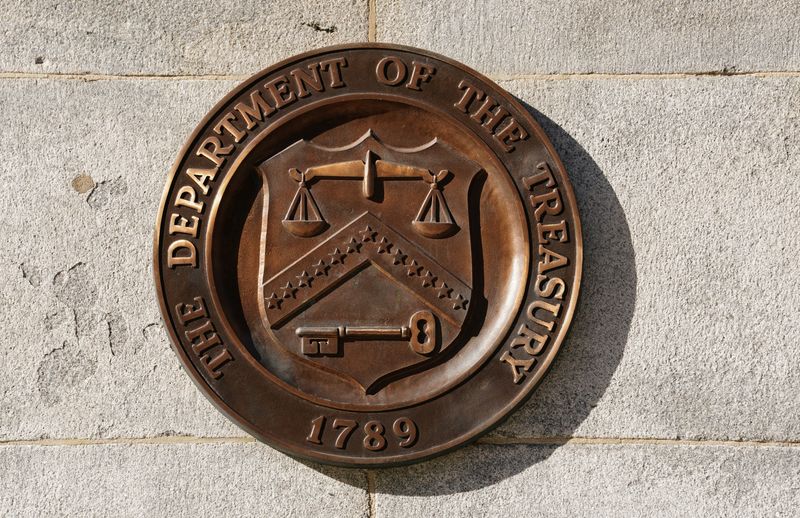By David Lawder
WASHINGTON (Reuters) - Trust funds supporting Social Security and Medicare benefits for U.S. seniors showed slight improvement as stronger-than-forecast economic growth and productivity has boosted revenue collections, according to trustees' reports released by the U.S. Treasury on Monday.
The Medicare Hospital Insurance Trust Fund's reserves are now expected to be depleted in 2036, five years later than was forecast in last year's report, Treasury said. After that date, the program that provides healthcare to seniors and some people who are disabled would be able to pay only 89% of total scheduled benefits, based on annual tax collections.
Reserves for the combined Social Security trust funds are now projected to be depleted in 2035, one year later than reported last year. The Old-Age and Survivors Insurance Trust Fund and the Disability Insurance Trust Fund would then be able to pay only 83% of scheduled pension and disability benefits on a combined basis.
The extension of the reserve depletion dates does not change long-term insolvency problems for the programs that together make up the largest share of federal government outlays, costing $2.2 trillion in fiscal 2023, or about 36% of the year's total.
With the Baby Boom generation retiring, Congress will ultimately need to strengthen the program by raising revenues, reducing costs, or cutting benefits. The Biden administration has rejected benefit cuts and has proposed raising payroll taxes on Americans earning over $400,000.
Currently, the maximum income subject to Social Security payroll tax is $168,600.
"Today's Trustees reports drive home the fact that the clock is ticking down to automatic cuts to Social Security and Medicare," said Michael Peterson, CEO of the Peter G Peterson Foundation, which has identified potential options for Congress to strengthen the programs including raising the retirement age and increasing tax collections.
U.S. economic growth has far outstripped expectations since last year's trustees reports, with torrid third quarter 2023 real GDP output of 4.9% and fourth quarter output of 3.4%. This slowed to 1.6% in the first quarter of 2024.
This has boosted tax revenues and prompted the trustees to lift their estimates of labor productivity, a senior Biden administration official told reporters. While the reports assume about the same level of "legal permanent residents" immigration (LPR), the official said the trust funds are benefiting from contributions from "other than LPR immigration" who are finding employment.
Based on increased economic growth and payroll tax collections, the main Social Security Old Age and Survivors Trust Fund would see its reserve depletion date delayed by about seven months to November 2033.
The Social Security Disability Trust Fund is now projected to be able to pay 100% of its scheduled benefits through at least 2098, the last year of the report's 75-year projection period. That marks a shift from 2021, when it was projected to be depleted in 2057.
The Medicare Hospital Insurance Trust Fund is also benefiting from reductions in inpatient hospital and home health care costs as well as a policy change to exclude reimbursement of medical education costs for Medicare Advantage enrollees.
This continued a trend that started during the COVID-19 pandemic, in which more people with very significant health problems died prematurely, leaving a senior population with fewer severe health problems.

The Medicare report said the hospital fund's income exceeded expenditures by $12.2 billion in 2023 and surpluses are now projected through 2029, before deficits will deplete the trust fund' reserves by 2036.
(This story has been corrected to make clear that Peter G. Peterson Foundation does not advocate for specific changes to Social Security and Medicare, in paragraph 7)